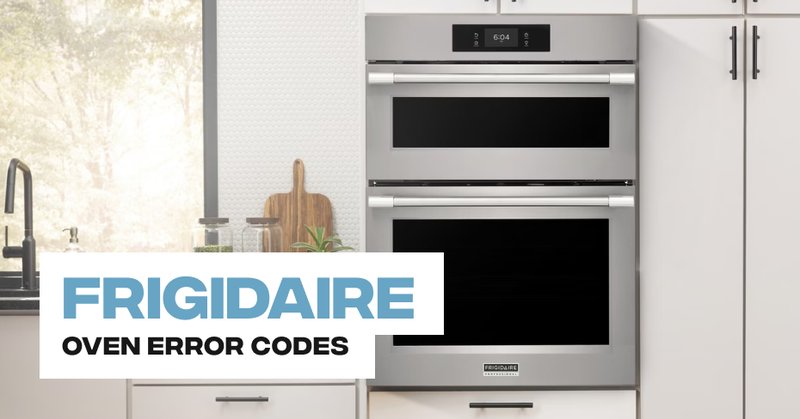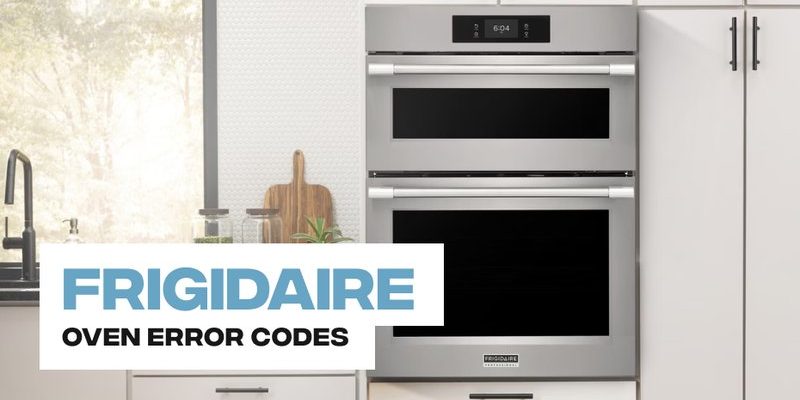
The “F2” error in Frigidaire refrigerators is a common issue that many owners encounter. At its core, this error code indicates a problem with the refrigerator’s temperature control system. Think of it as your refrigerator’s “check engine” light, signaling that something’s amiss with maintaining the correct temperatures. Understanding what causes this error and how to prevent it can save you a fair bit of stress – and perhaps a repair bill – down the line. Let’s delve into some easy-to-follow tips and tricks to keep this pesky error at bay.
Understanding the Frigidaire Error Code F2
Before we jump into prevention, let’s unpack what this error code really means. The F2 error typically signifies a problem with the refrigerator’s temperature control, often hinting at either a faulty thermistor or a temperature sensor that’s thrown in the towel. It’s a bit like having a broken thermostat in your car; your refrigerator simply can’t keep the temperature where it needs to be, which can lead to everything from spoiled food to a total refrigerator halt.
A thermistor acts as the refrigerator’s personal weather station, telling it whether it’s too hot or too cold inside. If this little device malfunctions, your refrigerator might struggle to maintain optimal cooling levels. The result? The infamous F2 error code. You see, maintaining the right temperature is crucial for preserving food’s freshness. So, when this system fails, your fridge sends out an alert through this error code.
What causes a thermistor to malfunction, you might ask? It could be a simple manufacturing defect, dust accumulation, or even the impact of frequent door openings and closings. Much like how your phone’s battery can degrade over time, these components can wear out and require attention. So, knowing how to address these issues is key to long-term peace of mind.
Steps to Preventing the F2 Error Code
The good news is, preventing the F2 error code from popping up in the future doesn’t require a degree in engineering. It’s more about regular maintenance and a few simple habits. Think of it like flossing for your fridge – a little effort goes a long way in preventing problems.
First, let’s talk about cleanliness. Dust and dirt can wreak havoc on sensitive components like the thermistor. Grab a vacuum cleaner or a soft cloth and make it a habit to clean around the back and bottom of your refrigerator every three months. This helps ensure any air vents and cooling coils are free from debris that could impact performance.
Next up, consider the placement of your refrigerator. Is it cramped in a tight space, or is it surrounded by heat-generating appliances? These conditions can cause your refrigerator to work overtime, hastening wear and tear on components like the thermistor. Make sure your fridge has enough breathing room and isn’t subject to direct sunlight or heat from nearby stoves or ovens.
Finally, monitor how often the fridge door is being opened. Each time the door swings open, warm air rushes in, prompting the system to work harder to cool down again. Try to minimize the frequency and duration of door openings. Educating family members on this can contribute significantly to maintaining the appliance’s health.
What To Do If You See The F2 Error Code
Even with all the best preventive care, sometimes things go awry. If you find yourself face-to-face with the F2 error code despite your efforts, don’t panic. Consider it a friendly nudge from your fridge that it’s time for a little TLC.
The first step is to perform a quick reset. Unplug your refrigerator for about five minutes, then plug it back in. Think of it as the classic “turn it off and on again” approach – sometimes, a system reset can work wonders. If the error code vanishes, you might be in the clear, but keep an eye out for any recurring issues.
If that doesn’t fix it, check the temperature settings. Ensure they aren’t accidentally set too low or too high. Your Frigidaire refrigerator is designed to maintain a specific range, and any deviation might be a simple case of misconfiguration.
Finally, if the error persists, consulting the owner’s manual or reaching out to a professional technician might be necessary. It could be that the thermistor needs replacing, and a trained professional can typically handle this with ease. Don’t worry, though; once it’s resolved, you’ll be well-equipped with the knowledge to keep your fridge running smoothly in the future.
The Importance of Regular Maintenance
Think of your refrigerator as a marathon runner, tirelessly working to keep your food fresh around the clock. Just like an athlete needs regular check-ups and maintenance to perform at their best, so does your refrigerator. Regular maintenance can be the difference between a fridge that runs smoothly for years and one that’s constantly acting up.
Routine checks and cleanings are a great way to start. Every six months, dedicate some time to defrosting the fridge completely and giving it a thorough clean. This not only helps prevent potential issues but also keeps the appliance in tip-top shape, extending its lifespan significantly.
Another important aspect is monitoring the overall health of your refrigerator. Keep an ear out for unusual noises or changes in cooling efficiency. These could be early warning signs of potential problems, allowing you to address them before they escalate into more significant issues, like the dreaded F2 error.
If you notice anything unusual, don’t ignore it. Just as a regular doctor’s visit can prevent a health scare, a quick call to a technician can avert a major fridge malfunction. It’s all about being proactive rather than reactive, ensuring your fridge remains a reliable kitchen companion for years to come.
In conclusion, while the F2 error code can seem daunting at first, with a little understanding and regular care, you can keep your Frigidaire refrigerator running smoothly and error-free. By maintaining cleanliness, ensuring proper placement, and monitoring its operation, you can prevent the F2 error and enjoy peace of mind knowing your refrigerator is in good hands.
